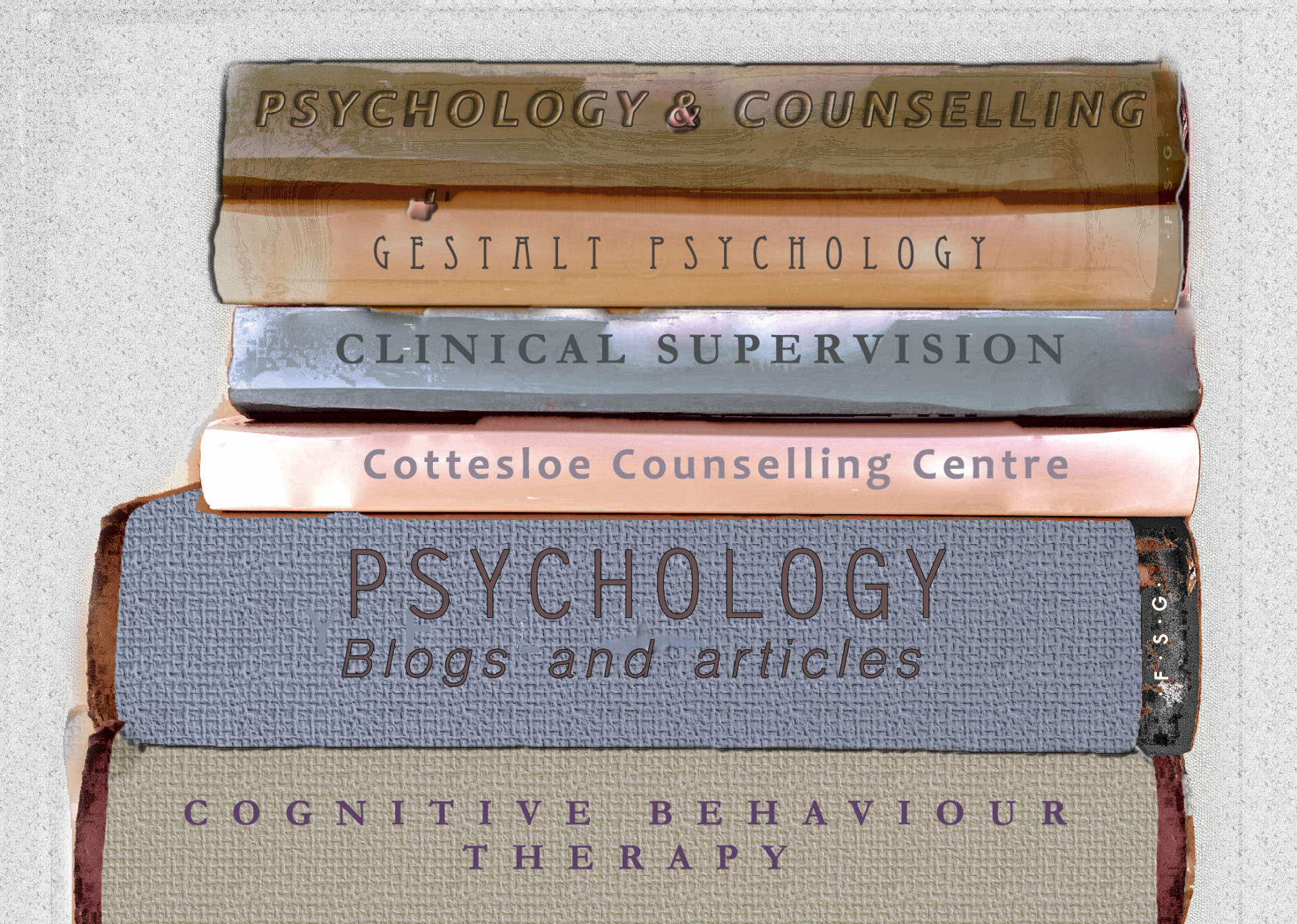Everyone has bothersome worries now and again. You may worry about a problem at work or school, about money, health, relationships or a family member. People with OCD (Obsessive-Compulsive Disorder), however become consumed by worry. These worries are not like those that people would normally expect to have; they are not worries about real life problems. The constant worry can become very consuming and interfere with a person’s life and sense of well being.
If you have OCD, you probably find yourself plagued by persistent, recurrent and unwanted thoughts. Frequently these will involve fear of contamination or possess destructive, violent or sexual content. People with OCD know these ‘obsessions’ are unrealistic creations of their own minds but they can’t get rid of them, they can’t control them, and they can’t ignore them.
In order to counteract these unwanted thoughts and feelings of distress, you may feel obliged to perform some ritual or ‘compulsion’. Many people have rituals, or specific ways of doing things, such as arranging equipment in a certain way, or storing things on shelves in a certain order. However; for people with OCD, such rituals may become ‘stuck’ and last for hours, resulting in the process becoming quite time-consuming. Even though the person performing the ritual knows that it makes no sense, they feel compelled to enact it over and over again. When the rituals are performed they help calm the fearfulness and anxiety associated with the obsession, however they only giving temporary relief.
COMMON OBSESSIONS
When the fears reflected in the following obsessions are experienced, they usually result in immediate anxiety. Some of the more common obsessions are:
- Contamination – fear of contamination by dirt, germs or other diseases.
- Repeated doubting – fear of not having done a specific act that could result in harm, fear of making a mistake
- Ordering – fear that things will not be ‘just right’, distress when things re moved or touched.
- Religious – fear of having blasphemous thoughts, preoccupation with religious images and thoughts.
- Aggressive – fear of harming oneself (e.g. while handling sharp objects, walking near windows), fear of harming others (e.g. poisoning people’s food, harming babies, hurting someone’s feelings}, fear of blurting out obscenities in public.
- Sexual – forbidden or unwanted sexual thoughts, images or urges, being obsessed with thoughts that involve children or incest, fear of being homosexual.
COMPULSIONS
Acting out the compulsions does not provide pleasure but they can help to feel less anxious and distressed. Compulsions can be very rigid and involve elaborate steps. They are either not realistically connected with what they are meant to stop or they are extreme beyond reason. Common compulsions include:
- Cleaning/Washing -washing hands too often or in a ritualised way, showering, grooming a lot or having detailed toilet routine, cleaning household items or other objects; avoiding objects or situation considered ‘contaminated’.
- Checking – checking that you don’t harm others or yourself; checking that nothing terrible happens; checking that you don’t make mistakes.
- Ordering/Arranging – making sure things are just right; or are consistent with a specific rule.
- Hoarding – collecting seemingly useless items, such as paper, magazines, towels, bottles or pieces of rubbish.
TYPES OF BELIEFS IN OCD
Whist unwanted thoughts, interpretations and beliefs are part of people’s thought processes and interactions with their environment, research has suggested that there are three types of thinking which are considered important for the development and persistence of OCD. They are:
– Intrusions – unwanted thoughts, impulses, or images, and
– Interpretations or appraisals – the meaning given to events and intrusions, and
– beliefs – enduring assumptions held across situations
This research describes six types of beliefs they considered important for the development and/or maintenance of OCD symptoms. Some of these are considered specific to OCD problems (e.g. importance given to thoughts, responsibility) but some also occur in other anxiety disorders (e.g. overestimation of threat, perfectionism)
- Overimportance of thoughts
This refers to the idea that just having a thought means that the thought is important and requires special attention. Some people with OCD may mistakenly believe that thoughts signal actions e.g. a woman thinks about stabbing someone and this means she is just as guilty as if she had actually done it. The person mistakenly concludes that the thought reveals their bad and dangerous nature. Individuals with superstitious, sexual, religious, and harming obsessions usually have difficulty with overimportance of thoughts and with the belief that they can control their thoughts. - Control of thoughts
Beliefs that intrusions are important are usually accompanied by efforts to control or suppress them. This represents ‘thinking about thinking’. Efforts to control particular thoughts usually result in a rebound effect, so that trying to suppress or block thoughts actually makes them recur more frequently. - Overestimation of danger
OCD sufferers often overestimate the likelihood of danger and of making mistakes, and they presume the worst outcomes. This is a difficult problem, since guarantees of safety are nearly impossible to obtain. Rituals to achieve this guarantee require extensive repetition because there is always room for error, even for the most careful people. Overestimation of danger fears may be found in individuals with contamination fears, with concerns about getting an illness or disease, or with concerns about causing terrible outcomes (such as fire, burglary, etc.). - Desire for Certainty
Some OCD individuals have difficulty tolerating ambiguous situations and tend to doubt the adequacy of their decisions and actions. An example would be ‘If I’m not absolutely sure about something, I’m bound to make a mistake.’ Desire for certainty often motivates reassurance seeking, checking and rereading. Of course, guarantees of safety can rarely be assured, and therefore the need for complete certainty to prevent mistakes and harm produces chronic anxiety in OCD individuals. - Responsibility
People with OCD often consider themselves responsible for preventing danger.
TREATMENTS
Modern treatments of OCD have radically changed how the disorder is viewed. While in the past OCD was regarded as chronic and untreatable, a diagnosis of OCD may now be regarded with hope. Cognitive and behaviour therapy and antidepressant medication are currently used to treat the disorder. Neither provides a ‘cure’ for OCD, but they control the symptoms and enable people with OCD to restore normal function in their lives.
Cognitive-behavioural therapy (CBT)
Within CBT there are two components to the treatment of OCD; they are exposure and response prevention (ERP) and cognitive therapy (CT).
The ‘exposure’ part of ERP involves direct and imagined controlled exposure to objects and situations that trigger obsessions that arouse anxiety. Over time, exposure to obsessional cues leads to less and less anxiety. Eventually, exposure to the obsessional cue arouses little anxiety at all. This process of getting ‘used to’ obsessional cues is called ‘habituation’.
The ‘response’ in ‘response prevention’ refers to the ritual behaviours that people with OCD engage in to reduce anxiety. In ERP treatment, people learn to resist the compulsion to perform rituals and are eventually able to stop engaging in these behaviours.
Cognitive therapy (CT)
In the treatment of OCD, cognitive therapy(CT) can be utilised in combination with ERT, and also as a treatment on its own. When a person is participating in the exposure tasks, they are asked to pay attention to thoughts and feelings related to the situation. In CT, the focus is on how a person interprets their obsessions, what they believe or assume to be true about them, and what their attitude is toward them and why they think they have these obsessions. For example, the person who fears shaking hands may believe it will pass on germs that may cause them to become ill. This interpretation of this fear can be challenged and re-interpreted so that shaking hands is no longer viewed as a high risk activity.
CT also helps people identify and re-evaluate beliefs around the potential consequences of engaging or not engaging in compulsive behaviour, and to work towards eliminating this behaviour. For example, a person who compulsively washes their hands for 30 minutes at a time may believe that they are doing so to guard against infection. When this belief is challenged and confronted as false, it can help control the behaviout.
Conclusion
Psychotherapy provides a supportive and specialist environment where an individual can understand and resolve their difficulties. Many people with OCD benefit from supportive counselling in addition to treatments aimed at reducing the symptoms of OCD. Specific forms of intervention, such as cognitive therapy and cognitive behavioural therapy are appropriate when symptoms are entrenched as they often are in OCD. If you would like more information about treatment and treatment options please feel free to contact Diana by telephone or email.


